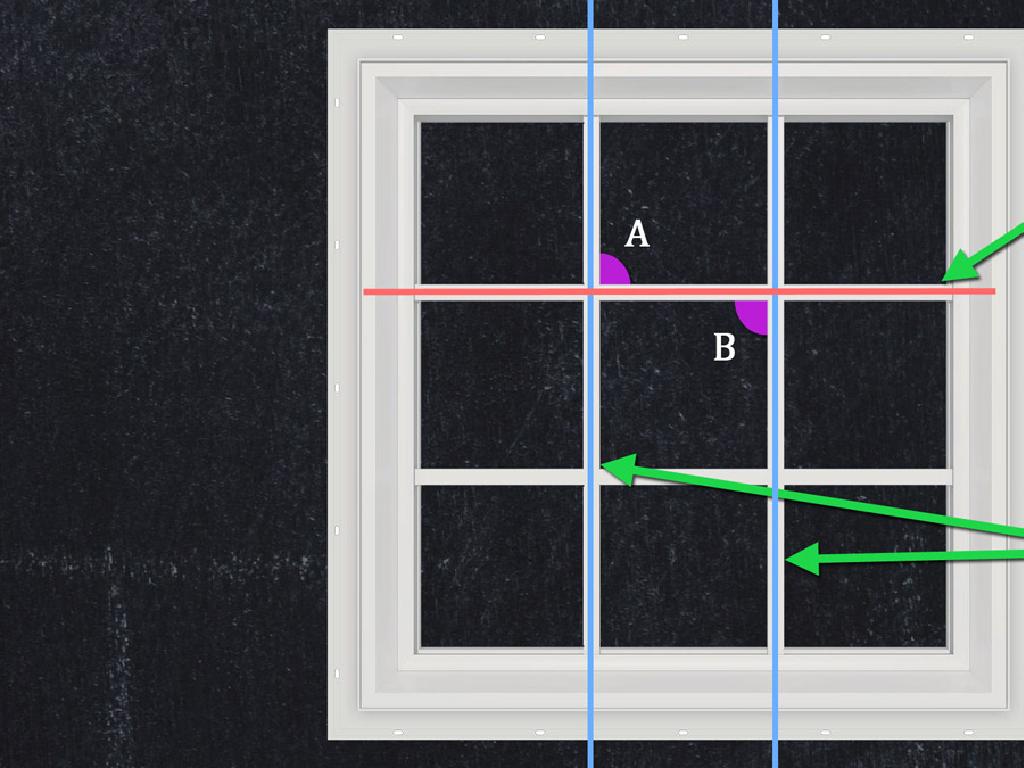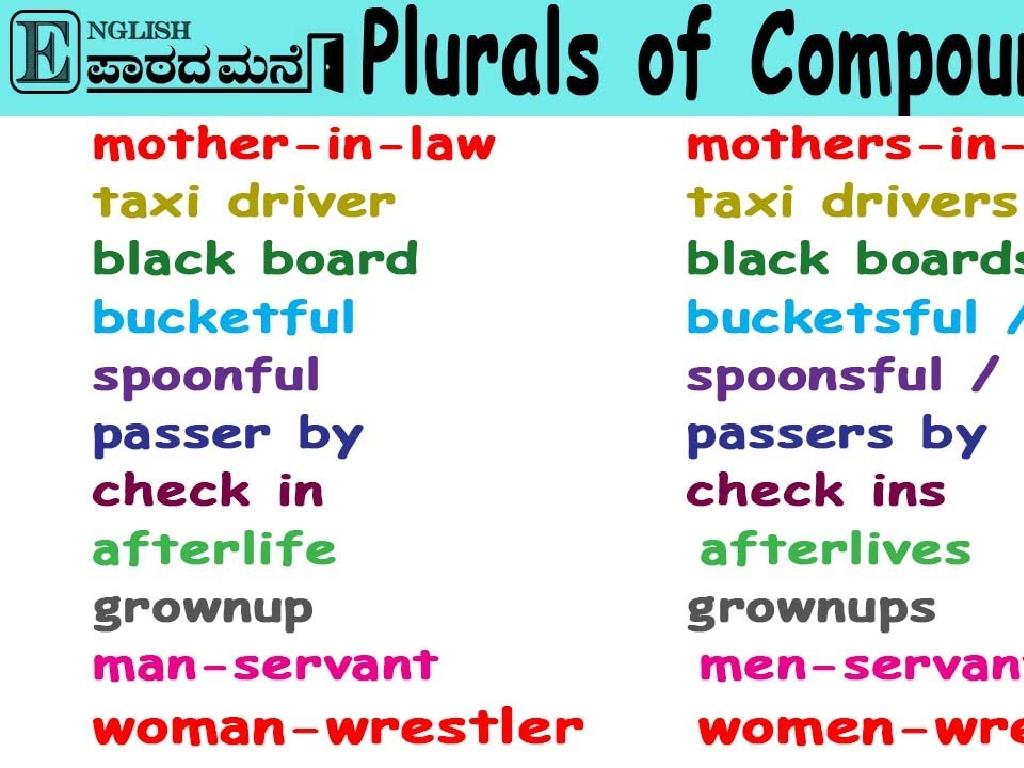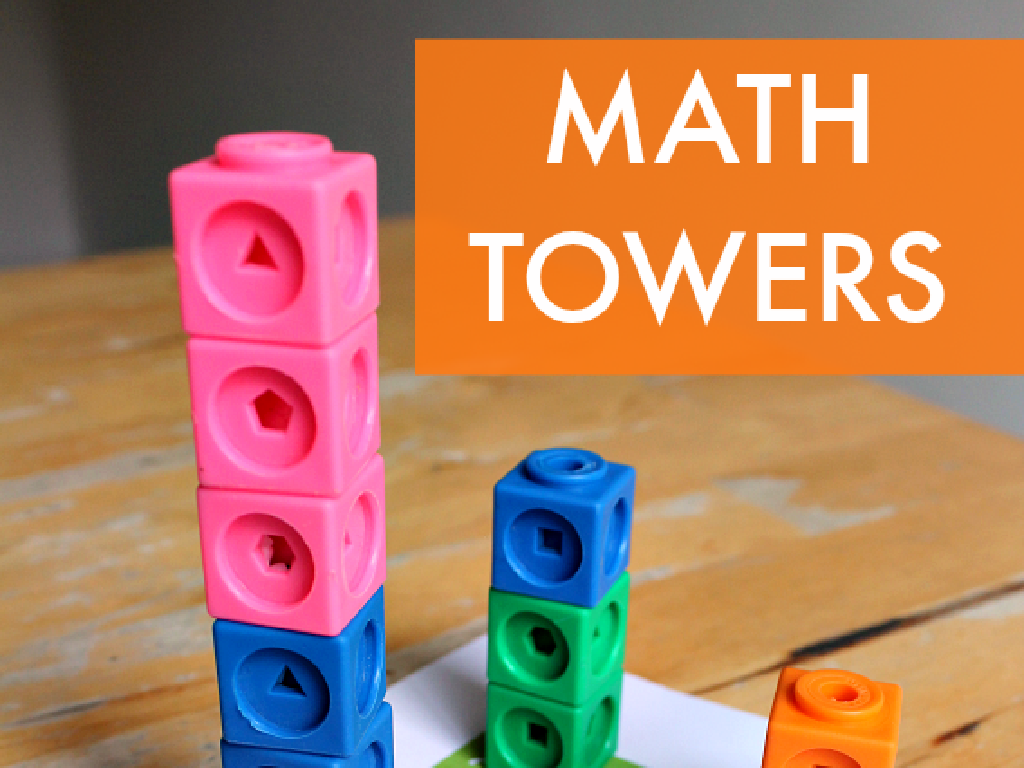Form And Use The Regular Past Tense
Subject: Language arts
Grade: Third grade
Topic: Verb Tense
Please LOG IN to download the presentation. Access is available to registered users only.
View More Content
Exploring Past Tense Verbs
– Understanding verb tenses
– What is a verb?
– Action words in sentences, like ‘run’, ‘jump’, and ‘play’
– Learning about past tense
– Past tense tells us the action already happened
– Examples of regular past tense
– ‘Walk’ becomes ‘walked’, ‘jump’ becomes ‘jumped’
|
This slide introduces the concept of verb tenses, focusing on the past tense for regular verbs. Begin by explaining that verbs are words that show action or a state of being. Then, clarify that verb tenses tell us when the action happens. Today’s lesson will focus on the past tense, which is used to describe actions that have already been completed. Provide examples of regular verbs in the past tense, emphasizing the addition of ‘-ed’ to the base form of the verb. Encourage students to think of actions they did yesterday and how they would describe them using past tense verbs.
Understanding Past Tense
– Past tense describes past actions
– Tells us what happened before now
– It’s used for finished activities
– Like a story that’s already done
– Examples: ‘walked’, ‘talked’, ‘played’
– ‘I walked to the park’, ‘We talked at lunch’, ‘They played a game’
|
The past tense is a verb tense used to talk about actions that have already happened. When teaching third graders, it’s important to use clear examples they can relate to. Use everyday activities to illustrate the past tense, such as ‘Yesterday, I walked to school’ or ‘Last night, we talked about the stars’. Encourage students to think of actions they did in the past and to practice turning present tense verbs into past tense. You can also introduce regular verbs that simply add ‘-ed’ to form the past tense, making it easier for them to understand and apply the concept.
Regular Past Tense Verbs
– Past tense verbs end with ‘-ed’
– ‘jump’ changes to ‘jumped’
– ‘walk’ becomes ‘walked’, ‘play’ turns into ‘played’
– Let’s practice verb changes
– We’ll change verbs like ‘look’ to ‘looked’
– We’ll do it together in class!
|
This slide introduces the concept of regular past tense verbs to third-grade students. Emphasize that most regular verbs in the past tense end with ‘-ed’. Use clear examples like ‘jump’ becoming ‘jumped’ to illustrate the point. During the class, engage students with a practice activity where they convert present tense verbs to their past tense forms. This will help solidify their understanding of the rule. Encourage participation and assist students who may struggle with the concept. Prepare a list of regular verbs for the practice activity and consider pairing students to foster peer learning.
Spelling Rules for Regular Past Tense
– Add ‘d’ to verbs ending in ‘e’
– Like ‘love’ turns into ‘loved’
– Change ‘y’ to ‘i’, add ‘ed’ for consonant+y
– ‘Try’ changes to ‘tried’, not ‘tryed’
– Just add ‘ed’ to vowel+y verbs
– ‘Play’ stays ‘played’, easy!
– Practice with examples
|
This slide is aimed at teaching third graders the basic spelling rules for forming the past tense of regular verbs. Start by explaining that for verbs that end in ‘e’, such as ‘love’, we simply add a ‘d’ to make it ‘loved’. For verbs ending in a consonant followed by ‘y’, like ‘try’, we change the ‘y’ to ‘i’ and add ‘ed’ to form ‘tried’. However, if the verb ends in a vowel followed by ‘y’, like ‘play’, we keep the ‘y’ and just add ‘ed’ to make ‘played’. Encourage the students to come up with their own examples and write them down to reinforce the rules. Provide additional practice with worksheets or interactive activities where students can convert present tense verbs to their past tense forms following these rules.
Mastering ‘-ed’ Pronunciations
– ‘-ed’ endings sound like /t/, /d/, or /jd/
– It’s about how we say the past tense ending
– After voiceless sounds, say /t/ (e.g., ‘kissed’)
– ‘Kiss’ ends with a quiet sound, so we add a /t/ to make ‘kissed’
– After voiced sounds, say /d/ (e.g., ‘played’)
– ‘Play’ ends with a loud sound, so we add a /d/ to make ‘played’
– Ends in ‘t’ or ‘d’, say /jd/ (e.g., ‘wanted’)
– For verbs like ‘want’ or ‘need’, we add an extra syllable, /jd/, making ‘wanted’ or ‘needed’
|
This slide is aimed at helping third-grade students understand the pronunciation rules for the regular past tense ‘-ed’ ending in English. It’s crucial to explain that the pronunciation depends on the final sound of the verb in its base form. Voiceless sounds are those made without vocal cord vibration, resulting in the /t/ sound for ‘-ed’. Voiced sounds use vocal cord vibration, leading to the /d/ sound for ‘-ed’. When the base verb ends in ‘t’ or ‘d’, the ‘-ed’ ending is pronounced as an extra syllable, /jd/. Provide examples and practice pronunciation in class to reinforce learning. Encourage students to listen carefully to the sounds at the end of the verbs and to practice with words from their reading or daily life.
Irregular Past Tense Verbs
– Some verbs break the rules
– Meet the irregular verbs
– Irregular verbs don’t end with -ed
– ‘Go’ changes to ‘went’
– Instead of ‘goed’, we say ‘went’
– ‘Goed’ is not a word
|
This slide introduces the concept of irregular past tense verbs to third-grade students. Unlike regular verbs that simply add -ed to form the past tense, irregular verbs change in unique ways. It’s important to highlight that these verbs do not follow the usual pattern and will need to be memorized. Use ‘go’ as a clear example, showing that the past tense is ‘went’ and not ‘goed’. Encourage students to think of other verbs they know and predict their past tense forms. In the next class, we can explore more irregular verbs and practice using them in sentences.
Let’s Practice Together: Past Tense Verbs
– I say a verb, you tell the past tense
– Starting with ‘talk’
– If I say ‘talk’, you say…?
– Next is ‘clean’
– If I say ‘clean’, you say…?
– Finally, ‘stop’
– If I say ‘stop’, you say…?
|
This slide is for an interactive class activity to practice converting present tense verbs to their regular past tense forms. The teacher will say a verb in its present tense, and the students will respond with the past tense form. Start with the verb ‘talk’, and the students should respond with ‘talked’. Continue with ‘clean’, to which students should respond ‘cleaned’, and ‘stop’, which becomes ‘stopped’. This exercise helps students understand the rule of adding ‘-ed’ to regular verbs to form the past tense. Encourage students to pronounce the verbs clearly and correctly. If time permits, the teacher can introduce more verbs for additional practice.
Class Activity: Past Tense Hunt
– Find objects around the classroom
– Use verbs in the past tense
– Verbs show actions and when they happened
– Describe your action with each object
– Think about what you did with the objects
– Example: ‘I kicked a ball’
– ‘I kicked a ball’ shows action in the past
|
This activity is designed to help students understand and practice using the regular past tense in a fun and interactive way. Encourage students to move around the classroom and pick objects they can perform actions with. They should then use verbs to describe what they did with these objects in the past tense. For example, ‘I picked up a pencil’ or ‘I opened a book’. This will help them grasp the concept of regular past tense verbs, which typically end in ‘-ed’. For the teacher: Prepare a list of common classroom objects and actions to suggest to students who may have difficulty finding examples. Also, consider pairing students to help each other and to facilitate peer learning.
Wrapping Up: Past Tense Practice
– Congrats on learning past tense!
– Homework: 10 past tense sentences
– Use verbs that end with -ed
– Apply the spelling rules
– For example: ‘I walked to the park.’
– Ready to review next class
|
Great work today, class! For homework, please write 10 sentences using regular past tense verbs to reinforce what we’ve learned. Remember the spelling rules: for most verbs, simply add ‘-ed’ to the base form. If the verb ends in ‘e’, just add ‘d’. For verbs ending in a consonant and ‘y’, change the ‘y’ to ‘i’ and add ‘ed’. We’ll go over your sentences in the next class, so be prepared to share your work. This will help you become more comfortable with using regular past tense verbs in your writing.






